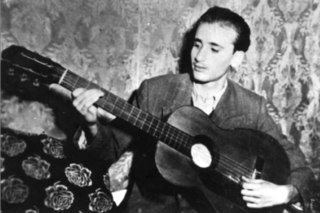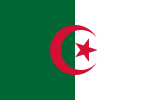
Raï, sometimes written rai, is a form of Algerian folk music that dates back to the 1920s. Singers of Raï are called cheb (شاب) or shabab, i.e. young, as opposed to sheikh, i.e. old, the name given to Chaabi singers. The tradition arose in the city of Oran, primarily among the poor. Traditionally sung by men, by the end of the 20th century, female singers became common. The lyrics have concerned social issues such as disease and the policing of European colonies that affected native populations.

Algerian music is virtually synonymous with Raï among foreigners; the musical genre has achieved great popularity in France, Spain and other parts of Europe. For several centuries, Algerian music was dominated by styles inherited from Al-Andalus, eventually forming a unique North African twist on these poetic forms. Algerian music came to include suites called nuubaat. Later derivatives include rabaab and hawzii.

El Hadj M'Hamed El Anka, also known as Hadj Muhammed Al Anka, El-Hadj M'Hamed El Anka, was considered a Grand Master of Andalusian classical music and Algerian chaâbi music.

Hacène Zermani, known by the stage name Takfarinas, is an Algerian Kabyle Yal musician. Takfarinas took his surname from the ancient warrior of North Africa Tacfarinas who fought against the presence of the Romans in Algeria. Since 1979 Takfarinas has lived in France. However, his songs promote and celebrate the Kabyle culture into which he was born. Takfarinas is perhaps best known for his voice which covers a wide range and the 'takfa' which is based on a traditional lute like instrument which he has modified by adding a second neck. Each neck provides a distinct sound, one neck is feminine and the other masculine. Nowadays the takfa has been replaced by an electric half-drum mandole. Like the takfa this has two fingerboards. The advantage of this new instrument is that it is able to create the large concert sound which he now needs.
Sultana Daoud was an Algerian Jewish singer, who helped preserve Arab-Andalus music, as well as introducing the genre to European audiences.
Chaabi, also known as Chaâbi, Sha-bii, or Sha'bii meaning "folk", refers to different music genres in North Africa such as Algerian chaabi, Moroccan chaabi and Egyptian Shaabi.
Cheikh El Hasnaoui his real name is Mohamed Khelouat was a Berber singer born in Taâzibt, a small town in the wilaya of Tizi Ouzou in Algeria.

Abdelkader Chaou is an Algerian musician who is well known in Algeria for his own style of chaabi music, both as a singer and a mondol virtuoso. He is considered important enough as a musician that he was recognized nationally at a tribute concert in 2013, an event that was a "tribute from his peers for a rich career."

The Algerian mandole is a steel-string fretted instrument resembling an elongated mandolin, widely used in Algerian music such as Chaabi, Kabyle music and Nuubaat.

Hsissen was an Algerian singer.

El Kettar Cemetery is one of the most famous cemeteries in Algeria. It is situated in a suburb of the city of Algiers in the commune of Oued Koriche. It opened in 1838 replacing the cemetery of Sidi Abderrahmane destroyed in 1830. It was previously known as Dar El Ghrib since foreigners of the city's limit were buried there. The current name, El Kettar, is due to the distillation of jasmine in the Bridja, a funeral monument dating from the Ottoman era. It was built on a steep hill cemetery, because at the time of colonization, the French authorities forbade Muslims to bury their dead in flat terrain.
Khelifa Belkacem was an Algerian singer.
Hadj Menouar was an Algerian singer.

Hadj M'rizek was an Algerian songwriter, lyricist, composer, poet and painter.
Mustapha Skandrani, was an Algerian pianist, performer of chaâbi music.

Mohamed Rouane is an Algerian musician and recording artist, well known in his own country for his performances of flamenco and "Casbah-style jazz" and especially for his use of the mondol.
Zawiyet Sidi Amar Cherif, or Zawiyet Sidi Daoud, is a zawiya school located in Boumerdès Province in Algeria.

The supporters of USM Alger have different songs for each rival club. Their repertoire also includes sociopolitical songs with committed lyrics such as “Qilouna!”, La casa del Mouradia, Babur ellouh, etc. These songs resonate widely among the Algerian population. In 2019, during the protests that Algeria experienced, the songs of the group Ouled El Bahdja were covered by demonstrators across the country, thus propelling them to the forefront of the international scene. Some ultra groups existed such as the “I Rossi Algeri” or the “Ultras Diablos”, but they disbanded around 2010.












